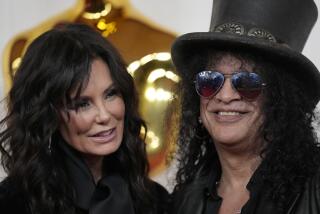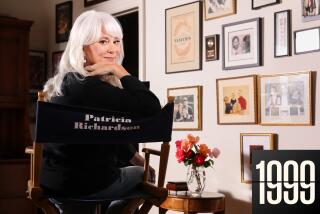MOCA exits put spotlight on finances
Three Museum of Contemporary Art officials with key financial roles -- the chief operating officer, fundraising director and a trustee who chaired the board’s finance committee -- have left MOCA in the last three months. They had been at their posts less than a year.
Meanwhile, since Jeffrey Deitch became MOCA’s director in mid-2010, efforts have stalled to pay down large deficits the museum incurred from 2000 to 2008 by illegally raiding its endowment. A source, who spoke on condition of anonymity because of the sensitivity of MOCA’s finances, said it has projected a deficit for the current fiscal year, which ends June 30.
The spate of recent departures and two others in mid-2011 is “a turnover that begins to look like turmoil,” MOCA’s former chief executive, Charles E. Young, said this week. Young is the former UCLA chancellor who had led a partial fiscal recovery at MOCA during the 18 months before Deitch became director. He said he’d heard from former MOCA colleagues that the museum broke even during the first year under Deitch, 2010-11.
MOCA officials declined to answer questions about the departures and the museum’s finances, instead releasing a brief written statement from David Johnson and Maria Bell, co-chairs of MOCA’s board. It said the board and Deitch have “worked to ... make staff changes where appropriate to strengthen the team. We are always sorry to lose a board member, but we have continued to build the board with the addition of five newly-elected trustees in the last 12 months.”
Gary Cypres, who joined MOCA’s board last summer to chair its finance committee, said he resigned in late January or early February but declined to give a reason. He said his wife, Kathi,who joined the board in 2008, remains a trustee. Cypres, who heads financial and travel companies that focus on a Latino clientele, became involved in MOCA’s recovery in December 2008, when he was named the financial advisor on a volunteer advisory committee that helped guide early recovery efforts.
David M. Galligan, who was second in command to Deitch, with oversight of business operations, left in February, according to his profile on LinkedIn, an online professional networking site. Galligan had assumed the new position of executive vice president and chief operating officer in early April 2011. He did not respond to requests for comment.
Deitch was a noted art dealer before being hired to lead MOCA; sources said Galligan had been brought aboard to compensate for Deitch’s lack of experience in managing large, nonprofit organizations.
When MOCA hired Galligan 11 months ago, Deitch cited his “real business-like approach” through more than 30 years as a consultant and an executive at the Ordway Center for the Performing Arts in St. Paul and the Walker Art Center in Minneapolis.
Sarah Sullivan, former director of development, or head fundraiser, confirmed that she had left in December. She previously had been executive director of development at CalArts.
Two other significant figures for MOCA’s finances left in mid-2011: Chief Financial Officer Richard Weil and trustee Fabrizio Bonanni, who had chaired the board’s finance committee but decided to leave after his term expired. Cypres said their departures had prompted the board to ask him to become a trustee and succeed Bonanni.
Weil declined to comment, and Bonanni, an executive vice president at Amgen, a pharmaceutical company, did not respond to a message.
Cypres’ resignation is “very bad news,” Young said. “He’s a very good man, a very dedicated person.” Young became MOCA’s chief executive in December 2008 at the behest of billionaire art philanthropist Eli Broad as he engineered a $30-million rescue of the museum from the brink of insolvency.
Hired for a limited term, Young oversaw layoffs and cutbacks in the exhibition schedule that reduced MOCA’s budget from more than $24 million to less than the $16-million cap insisted upon by Broad. He also ramped up fundraising, helping reduce the endowment debt from more than $32 million at the end of 2008 to $19 million by mid-2010.
“I’m disheartened to hear that things aren’t going as well as I hoped they would following my departure,” Young said. “Whatever else it might be, [high-level turnover] doesn’t give a good impression” to donors the museum needs to continue its financial recovery.
Half of Broad’s rescue package is a pledge to match every dollar raised for the endowment up to $15 million. The immediate aim is to rebuild the endowment to $37.6 million, its total in mid-2000.
That would be “a very important milestone” for the museum’s long-term well-being, Young said, because at that point, MOCA’s tumultuous recent history “becomes a positive story” that could inspire donations. “People would be able to say something happened that shouldn’t have happened, but now it’s been corrected, and now we can much more reasonably step up and do things” to turn a comeback into a renaissance.
Under Young, by mid-2010 Broad had paid $6.25 million of his endowment pledge; the Broad Foundation confirmed that no further payments have been made. That means $8.75 million remains untapped because the MOCA board hasn’t raised required matching funds.
Although Broad placed no time limit on his matches, Young said that concerns about the museum’s capabilities could arise if it fails to qualify for the full $15-million match by the end of 2013 -- five years from when Broad pledged the money.
Young said he’d also tried late in his tenure to get the MOCA board focused on a longer-term strategy to build the endowment to $100 million -- a level he feels is vital to the museum’s long-term fiscal health. Consultants presented the beginnings of a campaign plan, he said, with Deitch attending.
“As far as I know, that has languished,” Young said. “I think people just kind of dropped it.”
Meanwhile, the other half of Broad’s bailout pledge, contributions of $3 million a year for five years to help pay for exhibitions, extends through 2013, leaving MOCA the challenge of figuring out how to replace that money or live without it.
MOCA has an acclaimed collection and exhibition programs of post-World War II art, but deficits mounted at the rate of $2.8 million a year on average from mid-2000 to mid-2008.
With the museum already financially weakened, the late-2008 meltdown of global financial markets delivered a near-fatal blow, sinking the endowment to about $5 million. Trustees accepted Broad’s bailout after hearing a competing proposal from Michael Govan, director of the Los Angeles County Museum of Art, that would have made MOCA a LACMA subsidiary.
One of MOCA’s best-attended shows, “Art in the Streets,” was mounted in 2011, drawing 201,352 visitors. But museums rely far more heavily on donations than admissions income. An Andy Warhol retrospective in summer 2002 brought in $4.6 million in ticket sales and gift store profits, which accounted for 16% of overall revenue.
--
More to Read
The biggest entertainment stories
Get our big stories about Hollywood, film, television, music, arts, culture and more right in your inbox as soon as they publish.
You may occasionally receive promotional content from the Los Angeles Times.







